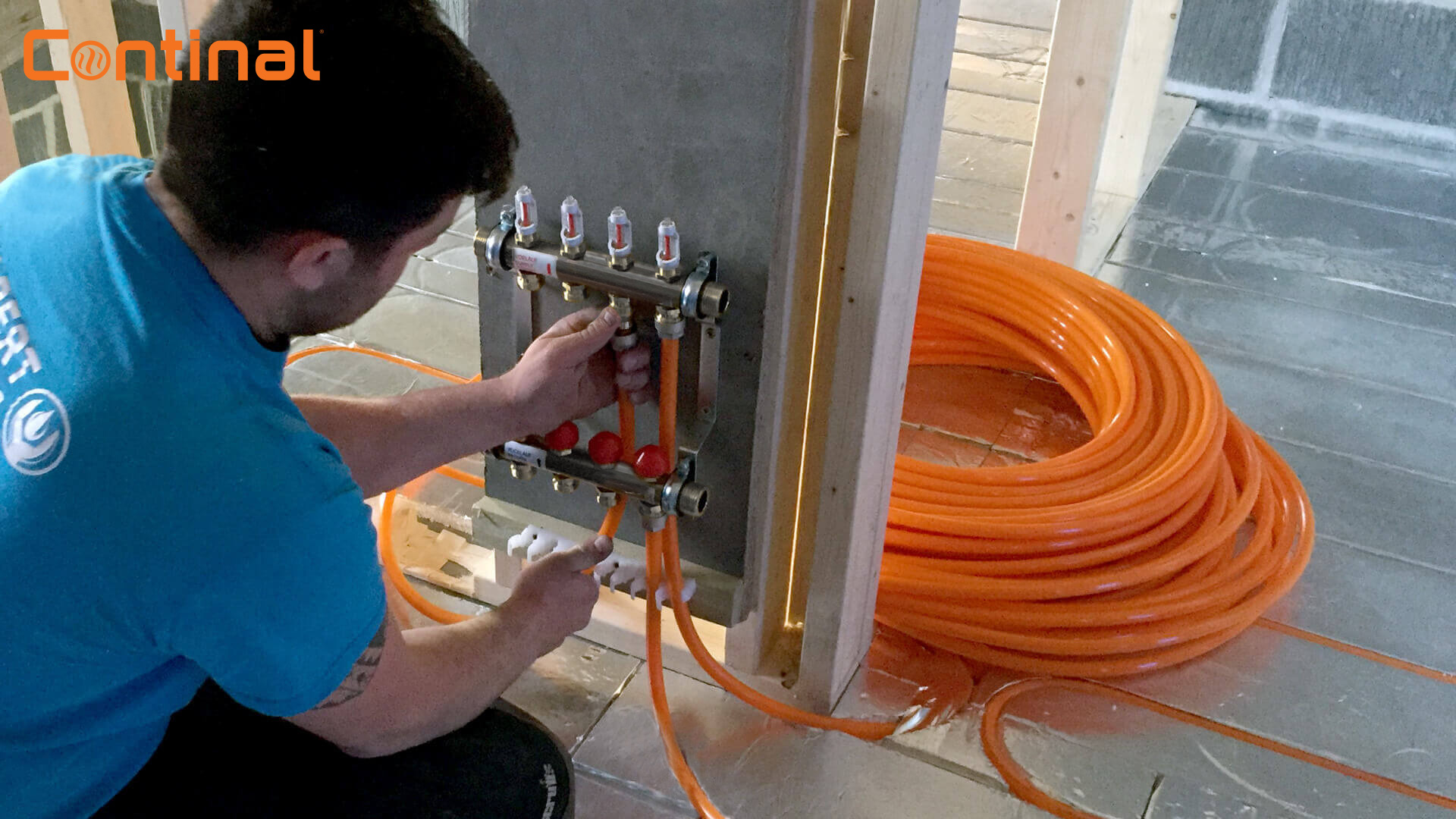Ease of installation, low running and maintenance costs, compatibility with renewable energy sources and its 'invisible' nature have all contributed to the UK's growing love affair with underfloor heating (UFH).
Anyone who has ever stepped barefoot across a floor with UFH knows just how appealing it is. Suddenly even the coldest of flooring - such as stone or ceramic tiles - can become a pleasure to walk on as well as look great.

How does underfloor heating work?
Underfloor heating is designed to run at lower temperatures than radiators and will work off virtually any heat source. Since underfloor heating largely delivers radiant heat rather than convective heat, ie heating objects rather than the air, it is possible to run a underfloor heating system at an air temperature one or two degrees lower than a radiator system to achieve the same level of comfort. This leads to lower heat losses from a building. Consumers have the option of warm water or electric systems. Essentially they work in the same way; a heating 'element' warms a radiating device to create an even spread of heat across a floor.
A warm water underfloor heating system is usually the preferred choice for new build or complete renovations as it is easy to install in new spaces. For single room renovations where an existing boiler has spare capacity, a warm water system can be bolted on and linked up to the existing radiator system. Running costs are also considerably cheaper than electric - as a general rule, the running cost of a warm water underfloor heating system is 30-40% cheaper than an electric system. However, for small areas or single rooms, electric could be the more cost effective solution when taking into account capital costs and disruption.
Underfloor heating's compatibility with renewable technology
The low average water temperatures of underfloor heating systems make them ideal for use with renewable sources of energy such as ground source or air source heat pumps. Linking a heat pump into a underfloor heating system enables the user to achieve highly economical running costs. Typical efficiencies of up to 450% can be achieved; the figure varying throughout the heating season to reflect the heat loss from a building, ground temperature and the system's design.
A major European report has confirmed that underfloor heating is in fact more energy efficient than radiators. Warm water underfloor heating can be up to 30% cheaper to run than radiators.
